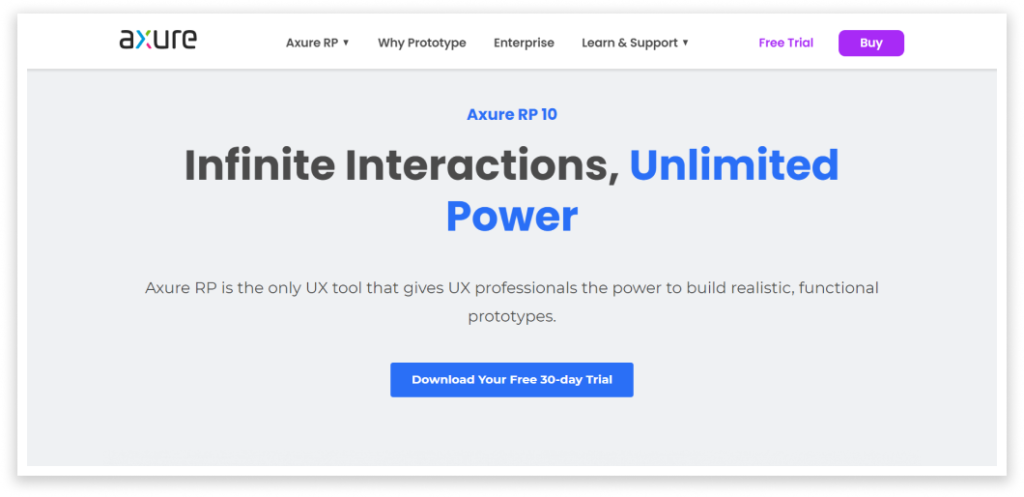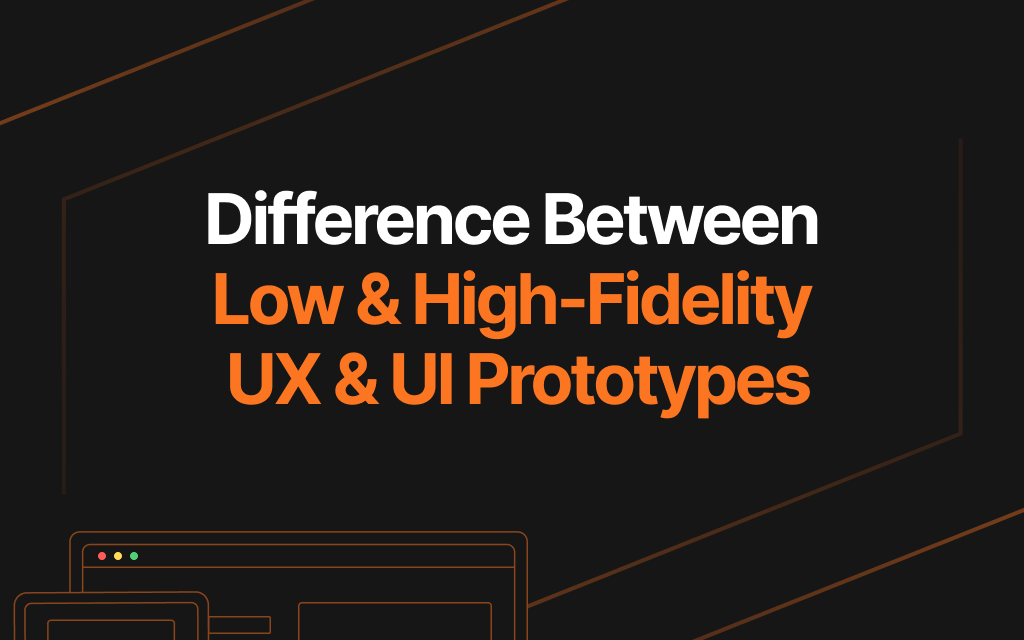Prototyping is a crucial part of the product design process. It enables designers to test and validate their ideas before investing resources in building the final product. Low-fidelity and high-fidelity prototypes are two types of prototypes commonly used in the product design process.
In this article, we will explore the differences between low and high-fidelity prototypes, their characteristics, advantages and disadvantages, and when to use each type.
By the end of this article, you will understand the differences between low-fidelity and high-fidelity prototypes, their advantages and disadvantages, and when to use each type.
What are Low-Fidelity Prototypes?

Low-fidelity prototypes are early-stage prototypes that are quick and easy to create. They are low in detail and fidelity, typically created using paper or basic digital tools. The purpose of low-fidelity prototypes is to test the core functionalities and interactions of the product.
| Characteristics | Benefits | Examples |
|---|---|---|
| Simple and basic | Quick and easy to create | Sketches |
| Low in detail and fidelity | Inexpensive | Wireframes |
| Easy and quick to create | Test the core functionalities and interactions of the product | Mock-ups |
| Created using paper or basic digital tools | Easily adaptable and changeable | Paper Prototypes |
| Focus on core functionalities and interactions | Encourage collaboration and communication among team members | |
| Used for early-stage testing |
Here are some examples of low-fidelity prototypes:
| Type of Low-Fidelity Prototype | Description |
|---|---|
| Sketches | Hand-drawn sketches that quickly explore different design ideas. |
| Paper Prototypes | Made by cutting out shapes from paper to simulate the user interface of a website or app. |
| Wireframes | Low-fidelity representations of a design that focus on layout and structure, created using tools like Balsamiq or Sketch. |
| Mockups | Static, low-fidelity representations of a design that show how it might look, created using tools like Photoshop or Illustrator. |
| Card Sorting | Technique used to organize information into categories and test different hierarchies. |
| Storyboards | Visual representation of a sequence of events, often used in film and video production, but can also be used to prototype user flows and interactions in digital products. |
What are High-Fidelity Prototypes?

Low-fidelity prototypes are early-stage prototypes that are quick and easy to create. They are low in detail and fidelity, typically created using paper or basic digital tools. The purpose of low-fidelity prototypes is to test the core functionalities and interactions of the product.
| Characteristics | Benefits | Examples |
|---|---|---|
| Simple and basic | Quick and easy to create | Sketches |
| Low in detail and fidelity | Inexpensive | Wireframes |
| Easy and quick to create | Test the core functionalities and interactions of the product | Mock-ups |
| Created using paper or basic digital tools | Easily adaptable and changeable | Paper Prototypes |
| Focus on core functionalities and interactions | Encourage collaboration and communication among team members | |
| Used for early-stage testing |
Here are some examples of low-fidelity prototypes:
| Type of Low-Fidelity Prototype | Description |
|---|---|
| Sketches | Hand-drawn sketches that quickly explore different design ideas. |
| Paper Prototypes | Made by cutting out shapes from paper to simulate the user interface of a website or app. |
| Wireframes | Low-fidelity representations of a design that focus on layout and structure, created using tools like Balsamiq or Sketch. |
| Mockups | Static, low-fidelity representations of a design that show how it might look, created using tools like Photoshop or Illustrator. |
| Card Sorting | Technique used to organize information into categories and test different hierarchies. |
| Storyboards | Visual representation of a sequence of events, often used in film and video production, but can also be used to prototype user flows and interactions in digital products. |
What are High-Fidelity Prototypes?

The main differences between low-fidelity and high-fidelity prototypes are in fidelity, detail, and complexity. The purpose and stage of product design also differ between the two types of prototypes.
Differences in Fidelity, Detail, and Complexity
Low-fidelity prototypes are low in fidelity, detail, and complexity, while high-fidelity prototypes are high in fidelity, detail, and complexity. Low-fidelity prototypes are typically created using paper or basic digital tools and focus on the core functionalities and interactions of the product.
High-fidelity prototypes are created using advanced digital tools and resemble the final product closely, focusing on the aesthetics, interactions, and functionality of the final product.
Differences in Purpose and Stage of Product Design
Low-fidelity prototypes are used in the early stages of product design to test the core functionalities and interactions of the product. High-fidelity prototypes are used in advanced stages of product design to test the aesthetics, interactions, and functionality of the product.
Low-fidelity prototypes are useful for validating ideas and iterating quickly, while high-fidelity prototypes are useful for user testing and stakeholder buy-in.
Advantages and Disadvantages of Each Type of Prototype
Low-Fidelity Prototypes
| Advantages | Disadvantages |
|---|---|
| Quick and easy to create | Low in detail and fidelity |
| Inexpensive | Cannot test aesthetics and advanced interactions |
| Test core functionalities and interactions | May not provide a realistic representation of the final product |
| Encourage collaboration and communication among team members | |
| Easy to adapt and change |
High-Fidelity Prototypes
| Advantages | Disadvantages |
|---|---|
| Provide a realistic representation of the final product | Time-consuming and expensive to create |
| Test aesthetics, interactions, and functionality | Require advanced digital tools and skills |
| Allows for user testing and feedback | May limit creativity and experimentation |
| Identifies design flaws and areas for improvement | Changes may be difficult to make |
| Increases stakeholder buy-in |
Choosing Between Low-Fidelity and High-Fidelity Prototypes
Choosing the appropriate type of prototype depends on the stage of the product design process and the specific goals of the project. Low-fidelity prototypes are useful for early-stage testing, validating ideas, and iterating quickly. High-fidelity prototypes are useful for user testing, stakeholder buy-in, and testing the aesthetics, interactions, and functionality of the final product.
Examples of When to Use Each Type of Prototype
| Scenarios for Low-Fidelity Prototypes | Scenarios for High-Fidelity Prototypes |
|---|---|
| Early-stage testing | User testing and feedback |
| Validating ideas and iterating quickly | Stakeholder buy-in |
| The collaborative and iterative design process | Testing the aesthetics, interactions, and functionality of the final product |
Top Tools To Use In User Experience and Interface Prototyping

There are many tools available for prototyping, depending on the type of prototype you want to create. Here are some popular options:
Sketch

Sketch is a popular design tool used for creating wireframes and prototypes for websites and mobile apps. It is a vector-based editing tool that offers wireframing and prototyping capabilities, along with support for plugins that add extra functionality.
| Sketch | Pricing | Comparison Features |
|---|---|---|
| Sketch | $9/month/user | • Vector-based editing for high-quality design |
| • Supports plugins for added functionality | ||
| • Wireframing and prototyping capabilities |
Figma

Figma is a cloud-based design tool that allows for collaboration with team members while creating UI designs and prototypes. It is vector-based and offers interactive prototyping with animations and transitions, making it a great tool for teams working remotely.
| Figma | Pricing | Comparison Features |
|---|---|---|
| Figma | $12/month/user or $144/year/user | • Cloud-based, allowing for easy collaboration |
| • Vector-based editing for high-quality design | ||
| • Interactive prototyping with animations and transitions |
Adobe XD

Adobe XD is a vector-based design tool that integrates with other Adobe products like Photoshop and Illustrator. It offers interactive prototyping with animations and transitions, along with voice and speech playback capabilities.
| Adobe XD | Pricing | Comparison Features |
|---|---|---|
| Adobe XD | $9.99/month | • Supports plugins for added functionality |
| • Integrated with other Adobe products like Photoshop and Illustrator | ||
| • Interactive prototyping with animations and transitions | ||
| • Voice and speech playback capabilities | ||
| • Integrates with Adobe Creative Cloud for easy file sharing and collaboration |
InVision

InVision is a web-based tool that allows for easy collaboration with team members while creating interactive prototypes with animations and transitions. It integrates with Sketch and Photoshop files and supports user testing and feedback.
| InVision | Pricing | Comparison Features |
|---|---|---|
| InVision | $7.95/month | • Web-based, allowing for easy collaboration |
| • Interactive prototyping with animations and transitions | ||
| • Integrates with Sketch and Photoshop files | ||
| • Supports user testing and feedback |
Marvel

Marvel is a web-based tool that offers interactive prototyping with animations and transitions, making it a great tool for creating prototypes for websites and mobile apps. It integrates with Sketch and Photoshop files and supports user testing and feedback.
| Marvel | Pricing | Comparison Features |
|---|---|---|
| Marvel | $12/month | • Web-based, allowing for easy collaboration |
| • Interactive prototyping with animations and transitions | ||
| • Integrates with Sketch and Photoshop files | ||
| • Supports user testing and feedback |
Axure RP

Axure RP is a desktop-based tool that offers advanced interactions and animations, along with dynamic panels and adaptive views for interactive prototyping. It also supports documentation and annotations, making it a great tool for more complex prototypes.
| Axure RP | Pricing | Comparison Features |
|---|---|---|
| Axure RP | $29/month/user | • Desktop-based for offline work |
| • Supports advanced interactions and animations | ||
| • Interactive prototyping with dynamic panels and adaptive views | ||
| • Supports documentation and annotations |
Balsamiq

Balsamiq is a desktop-based tool that focuses on low-fidelity wireframing for quick ideation. Its drag-and-drop interface is easy to use, and it integrates with popular project management tools like Jira and Trello.
| Balsamiq | Pricing | Comparison Features |
|---|---|---|
| Balsamiq | $9/month/user | • Focuses on low-fidelity wireframing for quick ideation |
| • Easy-to-use drag-and-drop interface | ||
| • Integrates with popular project management tools like Jira and Trello |
In conclusion, low-fidelity and high-fidelity prototypes are two types of prototypes commonly used in product design. They differ in fidelity, detail, and complexity, as well as in their purpose and stage of product design.
Choosing the appropriate type of prototype depends on the specific goals of the project and the stage of the product design process. By understanding the advantages and disadvantages of each type of prototype, product designers can make informed decisions and create successful products.
FAQs
Can low-fidelity prototypes be used for user testing?
A: Yes, low-fidelity prototypes can be used for user testing, but they may not provide a realistic representation of the final product.
Are high-fidelity prototypes more expensive than low-fidelity prototypes?
A: Yes, high-fidelity prototypes are typically more expensive than low-fidelity prototypes due to the advanced digital tools and skills required.
Can low-fidelity prototypes test aesthetics and advanced interactions?
A: No, low-fidelity prototypes are low in detail and fidelity and cannot test aesthetics and advanced interactions.
When should high-fidelity prototypes be used?
A: High-fidelity prototypes should be used in advanced stages of product design for user testing, stakeholder buy-in, and testing the aesthetics, interactions, and functionality of the final product.
What are some examples of low-fidelity prototypes?
A: Sketches, wireframes, mock-ups, and paper prototypes are examples of low-fidelity prototypes.

Keen to Work With Us?
Jin Design offers website design and development services that help businesses achieve their goals while showcasing their unique identity. Our team of experts collaborates closely with you to craft a custom website that meets your specific needs.
Our services include the latest design trends and innovative technologies such as responsive design, e-commerce integration, and personalized functionality.
If you’re considering launching a website project that truly represents your brand, contact us today without hesitation. Our team can help you unleash the full potential of a website that captures the essence of your brand. Visit our website to learn more.







